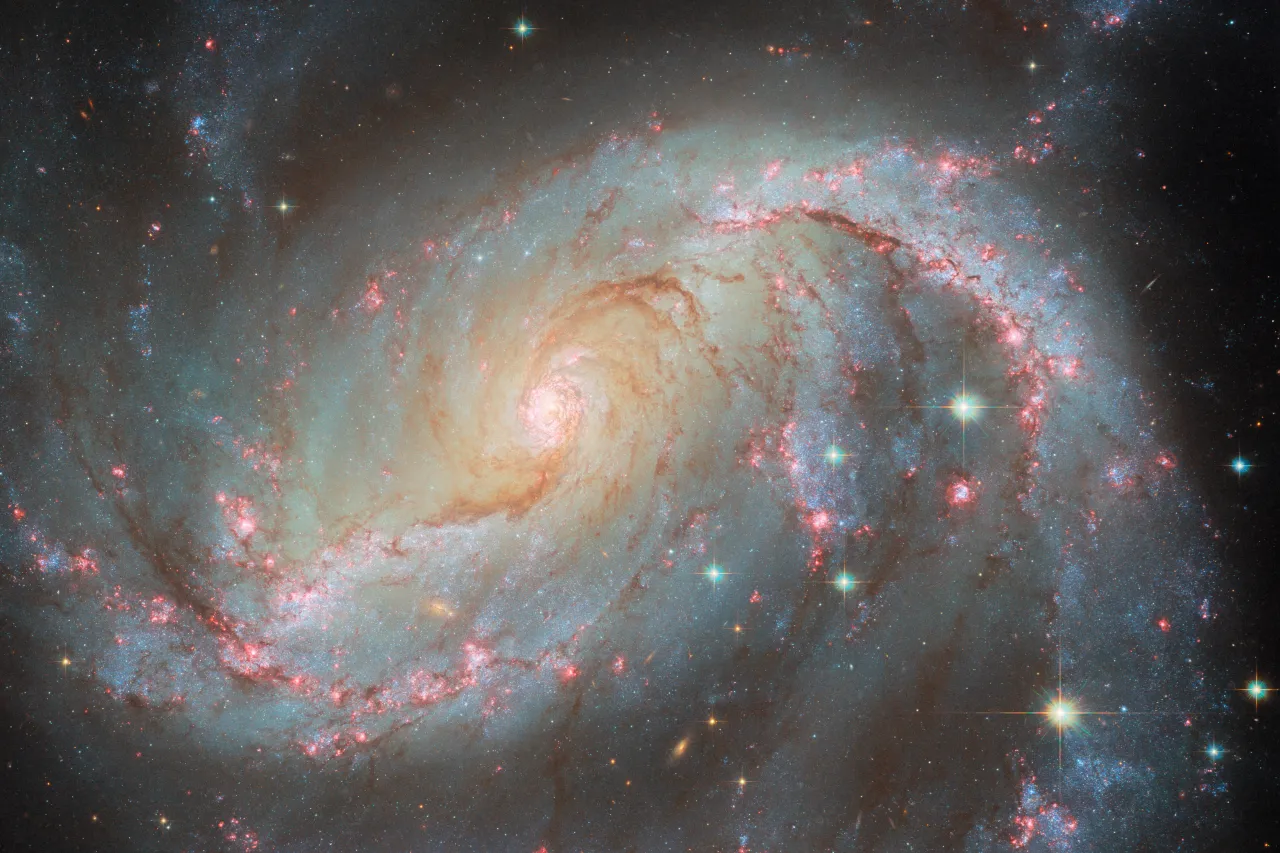In the constellation Dorado, 49 million light-years from Earth, the barred spiral galaxy NGC 1672 has been imaged by the NASA/ESA Hubble Space Telescope.
 This NASA/ESA Hubble Space Telescope image captures the spiral galaxy NGC 1672 with a supernova. Image Credit: ESA/Hubble & NASA, O. Fox, L. Jenkins, S. Van Dyk, A. Filippenko, J. Lee and the PHANGS-HST Team, D. de Martin (ESA/Hubble), M. Zamani (ESA/Hubble)
This NASA/ESA Hubble Space Telescope image captures the spiral galaxy NGC 1672 with a supernova. Image Credit: ESA/Hubble & NASA, O. Fox, L. Jenkins, S. Van Dyk, A. Filippenko, J. Lee and the PHANGS-HST Team, D. de Martin (ESA/Hubble), M. Zamani (ESA/Hubble)
This galaxy displays an amazing variety of celestial lights, making it a multi-talented light show. The galaxy has a lovely glow because, like any spiral galaxy, its disk is filled with bright stars. Radiation from infant stars hidden inside it fuels the dazzling red light that bubbles of hydrogen gas emit along its two large arms. Some remarkable stars are embedded in a ring of hot gas close to the galaxy’s center.
These recently formed, incredibly hot stars release strong X-rays. An even brighter X-ray source, an active galactic nucleus, is located closer to the very center of the galaxy. The Seyfert galaxy NGC 1672 is a result of this X-ray powerhouse. It is created when heated matter swirls in the accretion disk surrounding the supermassive black hole in NGC 1672.
Along with its bright young stars and X-ray core, this image’s highlight is the most fleeting and temporary of lights: a supernova, which can be seen in only one of the six Hubble images that comprise this composite. Supernova SN 2017GAX was a Type I supernova caused by the core collapse and subsequent explosion of a massive star, which went from invisible to a new light in the sky in just a few days.
The supernova is visible as a tiny green dot on the right side, just below the crook of the spiral arm, and it is already fading. Since it is impossible to see a companion star next to a live supernova, astronomers deliberately took this picture of the fading supernova to search for any companion stars that the supernova progenitor might have had.
The NASA/ESA/CSA James Webb Space Telescope recently imaged a crop of galaxies, including NGC 1672, revealing the dust structure in its spiral arms and the ring of gas.